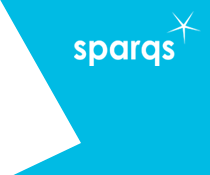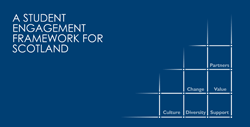In this interview, we talk to Sam Smith, former National Vice President of the New Zealand Union of Students’ Associations (NZUSA), who recently led a project for New Zealand’s higher education quality body, the Academic Quality Agency (AQA). Sam graduated with a Bachelor of Laws and Bachelor of Arts (Political Science and Public Policy) in 2020 and during his time at the University of Otago, he was the Finance Officer of the Otago University Students’ Association (OUSA). It was there that he developed his passion for student advocacy and interest in student voice and partnership.
1. Firstly, can you tell us a bit about your journey as a student, and what got you interested in student engagement?
I began university in 2016, following a gap year in Japan. When I came back to New Zealand, I was looking for my next challenge. During my first year at university, I was obviously finding my feet and learning the ropes, but in my second year, a friend suggested (or rather, strongly encouraged) that I run in the students’ association election and I was successful and took office in 2018. As the Finance Officer, I was interested in how students’ associations were funded and I fell down the never-ending wormhole of Voluntary Student Membership (VSM) and the effects it had, not only on the funding of students’ associations in New Zealand, but its ongoing impacts on student voice and engagement. Advocating for reform in this area became a focus of mine over the next few years.
2. How would you describe your term of office with NZUSA? What happened during your year and what did you achieve?
I was elected as National Vice President of NZUSA in 2020. The year began well, we had a fantastic National Executive made up of local students’ association presidents, we had our plan in place, and then, as you can guess, everything was derailed by the pandemic.
NZUSA immediately recognised that students were going to be some of the most impacted by the pandemic, particularly due to the loss of casual employment and the (patchy) transition to distance learning during the nationwide lockdown. NZUSA supported students from across the country to mobilise, and together, we produced a ‘National Student Action Plan on COVID-19’, outlining what students needed from the government and tertiary education providers to get through the lockdown. Most of our requests were met, including over $60 million in government funding for hardship grants, technology access grants and mental health support. Although these achievements were significant, there were short-term solutions to longstanding issues.
Our achievements from 2020 that will have lasting effects are the government inquiry into student accommodation that was initiated following an NZUSA-led campaign, legislative changes to the residential tenancies act that will provide greater protection to renters, and the introduction of free trades training and apprentices.
One project that I was involved in was a partnership project with the Ministry of Education and other national students’ associations to create guidance for tertiary education providers on creating and developing meaningful engagement and partnerships with their students. The need for this work came following the lockdown, when major decisions were being made about students, without students. Although the lack of student partnership in the sector already existed, it became more apparent throughout the pandemic. The resource we developed is called Whiria ngā rau, and I hope it begins discussions and actions within the sector to better engage students at all levels of tertiary education decision-making.
In short, my term in office saw students experience significant challenges, but at the same time, opportunities presented themselves to address some fundamental issues that already existed, but were exacerbated by the pandemic.
3. What about your recent role with AQA? How have they been developing partnership, and how have you been a part of that?
When I finished my term at NZUSA, an opportunity arose at AQA to advise the organisation on how it could strengthen its partnership with students, and how it can support tertiary education providers to partner with their students in matters of academic quality.
AQA have been at the forefront of supporting student voices in the sector for many years, and they run annual Student Voice Summits in partnership with national students’ associations, to build capability among student leaders. AQA also have a student board member, a Partnership Agreement with NZUSA, and, from this year, will have student members on every external panel that conducts academic audits of New Zealand universities.
The project I have been leading is two-fold and is based on recommendations made to AQA in its own external review. Using examples of student partnership frameworks from overseas, and Whiria ngā rau, I have provided guidance for how those involved in academic quality, both students and staff, with AQA, could develop good practice guidelines for working with students in academic quality assurance activities.
The second part is providing direct advice to AQA on how it can strengthen its engagement and partnership with students, whether that be the student member on their Board, student auditors, or the various student leaders that AQA works with on a regular basis. Although my advice is tailored to AQA and the realm of academic quality, I hope other parts of the sector also find it useful and consider how it could be applied to learning and teaching, pastoral care, and so on.
4. It’s really interesting reading about Whiria ngā rau, and it is striking that it contains powerful language about collective growth and diversity. How much do these concepts shape the thinking on student engagement in New Zealand?
In New Zealand, all tertiary education providers have obligations to honour the principles of The Treaty of Waitangi (Te Tiriti o Waitangi), a foundational document singed in 1840 between the British Crown and the indigenous Māori people. The principles of partnership, participation and protection play a significant role in New Zealand, and when it comes to student engagement, providers still have a long way to go to ensure Māori voices are part of institutional decision-making. New Zealand also has a role in supporting Pacific student voices due to large populations of Pacific communities and students who have made New Zealand their home.
When we were developing Whiria ngā rau, it was important for us at NZUSA to recognise that our organisation is inherently colonial, and that the important task of designing what student engagement and partnership looks like in New Zealand must involve the national Māori and Pacific students’ associations from the start. Disabled and rainbow students were also part of this work and all those involved regularly engaged with our various student networks to ensure the final product was reflective of the rich diversity of students in our sector.
5. Your project has drawn on international practice in student engagement, including Scotland. What ideas have you taken from this research?
For those of us working in student voice and partnership, we truly look to Scotland and sparqs as the gold standard of how an ethos of student partnership can be embedded into the tertiary education sector, and NZUSA have been advocating for a similar entity to sparqs to be established in New Zealand.
From my research into Scotland, Wales, Ireland, England, Europe and Australia, there were three key takeaways that informed my advice to AQA. The first was how student voice, engagement and partnership has been used and defined. In New Zealand, we mostly use ‘Student Voice’, and although some may use this when referring to partnership like engagement, technically having one student on an academic committee with no support could also count as ‘student voice’. Using the language of student partnership set a higher aspiration and must become the new phrase when referring to students and staff working together.
The regions that have made the most progress when it comes to student partnership have used a multi-lateral approach (students, staff, management, government, agencies) to the design and implementation of partnership frameworks and practices. This is why, in my advice to AQA, the development of good practice guidelines for student partnership in academic quality must be done with the wider sector.
The biggest takeaway was that almost all of the regions I researched have, in some form, a national entity that is tasked with bringing the sector together and supporting them in their student partnership progress. sparqs, Wise Wales, NStEP, the E4 Group and Student Voice Australia have all played a critical role in transitioning, or beginning to transition, their respective sectors from a ‘students as consumers’ model to a ‘students as partners’ model. New Zealand lacks this, and it is something that AQA should keep pushing for, alongside others in the sector.
6. Can we go back to your earlier comments about COVID-19? It’s had a hugely disruptive impact on learning and teaching here in Scotland and the wider UK, and while we are aware things are different now in New Zealand, and you’ve already mentioned some of the early impacts and changes, has the pandemic shaped national discussions about learning and engagement for the longer term?
I don’t know if we would have developed Whiria ngā rau when we did if it wasn’t for COVID-19. As the country went swiftly into lockdown, major decisions were being made left, right and centre, that had huge impacts on students; how their courses were to be taught, changes to exams, students being taken out of their student accommodation, and often, students were missing in the making of these decisions.
For many in the sector, conversations about the role of students within their communities of learning came to the forefront. The Ministry of Education began including student leaders in their weekly meeting with senior managers from providers, lecturers were asking students about how their learning experience could be improved as they transitioned online, and, as of this year, one of New Zealand’s eight universities has signed the first student partnership agreement, and others are beginning those discussions.
7. Given all these developments, what happens next in New Zealand’s student engagement? What do you hope your sector looks like in the future?
In the short-term, I hope that tertiary education providers and government agencies, like AQA have done, examine how they engage with students and use Whiria ngā rau to guide the creating and development of robust partnership practices. However, I do think this kind of sector-wide mindset shift requires an entity, like sparqs, to support both students and providers in this transition. Many in the sector have been asking for this, and at the end of last year at NZUSA’s Congress, the Minister of Education said it was being considered by the Government. Currently, student partnership through engagement relies on student and staff ‘champions’, and I hope we get to the point where student partnership is embedded into the system and becomes the new normal.
You can read more about Whiria ngā rau in the report or on the NZUSA website.
.
Thanks to Sam for being an interviewee. To suggest a future subject for interview, please contact us.
This interview is part of a series of occasional interviews on our website with student engagement practitioners – both staff and students, and from within Scotland’s university and college sector and beyond. The interviews aim to capture the different perspectives that people have on student engagement in the quality of learning.


